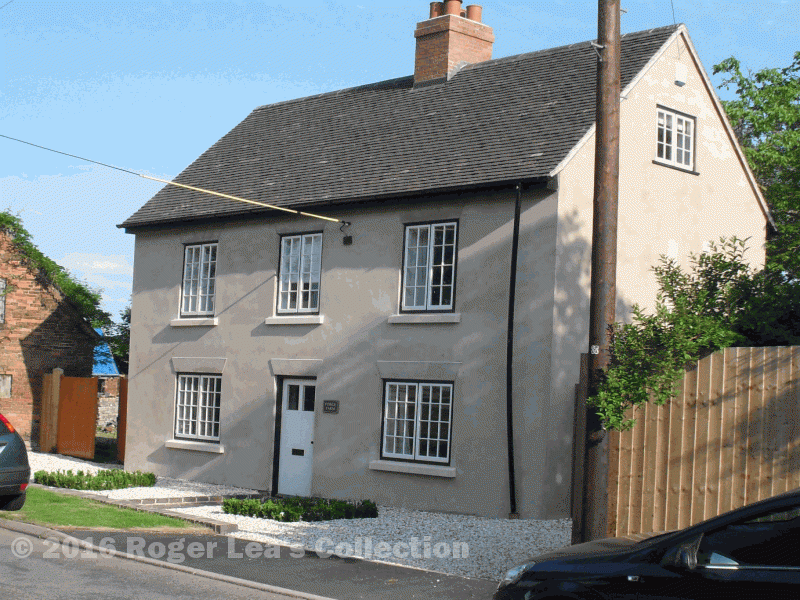Preserved in the Lichfield Diocesan Record Office is the will of Thomas Patterton, who died in 1690. He was a yeoman living in Walmley, and the will mentions a room in his house which was “next the street”. This street is now Walmley Ash Lane - Walmley then consisted of a few houses at Walmley Ash, Walmley Village as we now know it was then open common land - but it is hard to visualise this back lane as a village street.
In 1721 the Rector of Sutton recorded that there were eighteen houses in Walmley and no cottages; in 1663 there had been twenty houses, but by 1824 the total was only sixteen. These figures indicate a gradual shrinking of the ancient settlement at Walmley; in the Middle Ages there had been a moated farmstead there, the site , on the corner of Webster Way and Walmley Ash Road, can still be seen.
Although it appears from the population figures that the village was in decline early in the nineteenth century, one of the houses, Forge Farm, tells a different story. The back part of this house is a timber-framed medieval hall house with crucks dating from before 1600, a rare survival in Sutton. The farmer who lived here must have been flourishing, as by 1800 the house had more than doubled in size by the addition of a range of Georgian building at the front.
Forge Farm was owned and occupied in 1824 by Mary Swift, who owned thirteen acres of land at Walmley Ash, hardly enough to make a living - perhaps she had more land over the border in Minworth, the parish boundary ran parallel with Walmley Ash Lane at the bottom of her garden. In 1861 the farmer at Forge Farm was Mrs. Langley, whose husband James was a master builder. By this time there was plenty of building work in Sutton, Walmley Village was now established half a mile to the west, and Walmley Ash Lane was even more of a rural backwater than it had been before.
